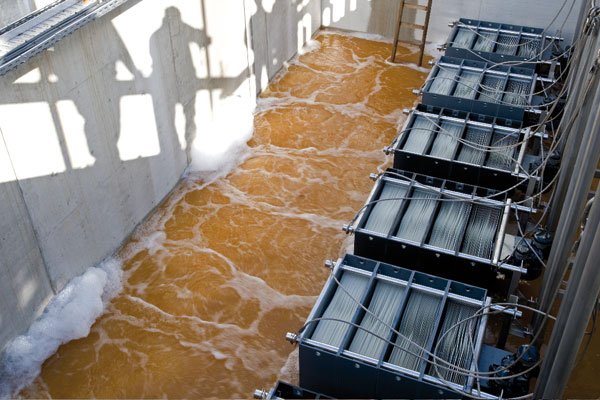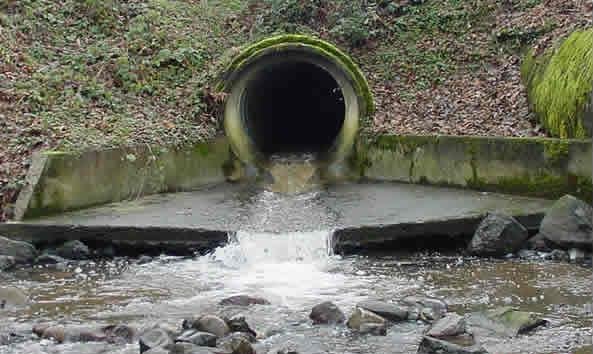
Filtration in Wastewater: Essential Techniques for Purification

Filtration in wastewater treatment is a critical process for removing impurities from water before it is released back into the environment or reused. The process involves passing water through substances that act as filters to separate particles and contaminants from the water. This is essential for protecting water quality, ecosystem health, and human well-being. As the pressure on global water resources grows, efficient and effective filtration methods become increasingly important to ensure that treated water meets regulatory standards and is safe for various uses.
Recent advancements in membrane filtration technologies offer enhanced capabilities for treating wastewater. These technologies are highly effective at removing a wide range of contaminants, including pathogens, chemicals, and solids. In addition to purification, these systems are also designed with sustainability in mind, aiming to minimize environmental impacts and improve the operations of water treatment facilities. With ongoing research and development, there is continuous improvement in the field, ensuring that modern filtration methods keep pace with emerging contaminants and stricter quality requirements.
Key Takeaways
- Effective filtration is vital for water quality and safety.
- Membrane technologies are advancing wastewater treatment.
- Sustainability is a core consideration in modern filtration systems.
Principles of Filtration
In wastewater treatment, filtration serves the critical function of removing particulates from water, thereby enhancing its quality for discharge or reuse. It involves various mechanisms and processes, with a primary goal to protect public health and the environment.
Filtration Mechanisms
Filtration in water treatment employs several mechanisms to separate suspended particles from the fluid being treated. The primary mechanisms include:
- Mechanical straining: Larger particles are removed as they are unable to pass through the filter’s pores.
- Sedimentation and flotation: Particles settle out or float due to gravity before reaching the filtration media.
- Adsorption: Attraction forces at the surface of the filter media capture smaller particles.
Filtration Processes
The filtration process in wastewater treatment involves several steps, which vary depending on the technology used and the quality of the wastewater. Common processes include:
- Pretreatment: This may involve coagulation or flocculation to aggregate fine particles into larger ones.
- Primary filtration: Uses primary screens or sedimentation tanks to remove coarse solids.
- Secondary filtration: Fine filtration can involve sand filters, membrane filters, or biological filters.
- Disinfection: Post-filtration stage where pathogens are inactivated, often with chlorine or UV light.
Purpose of Filtration
The purpose of filtration in water treatment is multifaceted:
- To protect human health by removing pathogens and harmful contaminants.
- To prevent pollution by ensuring that water released into the environment meets regulatory standards.
- To maintain ecosystem health by safeguarding aquatic life.
- To enable water reuse in agricultural and industrial applications thereby conserving freshwater resources.
Types of Filtration Systems
Filtration is a crucial step in wastewater treatment, with various systems designed to remove contaminants through physical, chemical, or biological processes. The choice of filtration system depends on the desired quality of water and the nature of the impurities present.
Granular Media Filtration
Granular media filtration involves passing wastewater through a bed of granular material, typically sand or anthracite, to capture particles. Sand filtration is common due to its effectiveness in removing particulate matter and microorganisms. It operates based on the size exclusion process, where the space between the grains captures the particles.
Cloth Media Filtration
Cloth media filtration uses layers of fabric to trap suspended solids. Systems such as disc filters integrate this media type, which allows for high-rate filtration and reduced footprint. They are adept at handling large volumes and are frequently employed as a tertiary treatment step.
Micro screen Filtration
Microscreen filtration employs fine screens, including drum filters and disc filters, to remove small particles. Sizes can range from 10 to 60 microns. These systems are effective for solids removal after biological treatments and are valued for their low energy requirements and simplicity.
Membrane Filtration
Membrane filtration utilizes semipermeable membranes to separate particles on a molecular scale. Types include microfiltration, ultrafiltration, and reverse osmosis, each defined by the size of particles they can filter. These methods are highly effective for achieving high-quality effluent, with reverse osmosis capable of removing dissolved salts and impurities.
- Microfiltration: Removes particles greater than approximately 0.1 microns.
- Ultrafiltration: Filters out particles in the 0.01 to 0.1 micron range.
- Reverse Osmosis: Eliminates particles as small as 0.001 microns.
These advanced filtration systems are integral to modern wastewater treatment processes, often used in applications that require stringent water quality standards.
Membrane Filtration Technologies
Membrane filtration technologies are integral to modern water treatment processes, enhancing the purification of wastewater by permitting the selective separation of contaminants based on their size and molecular weight. These technologies operate under the principles of pressure-driven separation and can be implemented in various stages of water treatment to achieve the desired water quality.
Microfiltration
Microfiltration (MF) employs membranes with pore sizes typically ranging from 0.1 to 10 microns to remove larger particles, bacteria, and suspended solids from wastewater. It’s commonly used as a pretreatment step before finer filtration or as a standalone process for less contaminated streams. Practical applications encompass effluent polishing and clarification of potable water.
Ultrafiltration
Ultrafiltration (UF) involves more refined membranes with pore sizes roughly between 0.01 and 0.1 microns. This technology traps most viruses, some dissolved substances, and high-molecular-weight solutes. In industrial scenarios, UF is instrumental for protein separation, endotoxin removal, and as a precursor to nanofiltration or reverse osmosis.
Nanofiltration
With membranes that reject particles with diameters as small as 0.001 microns, nanofiltration (NF) is a critical step in the removal of heavy metals and smaller organic molecules, while softening the water by reducing calcium and magnesium levels. The principles and applications of nanofiltration rely on its capability to operate with moderately lower pressures compared to reverse osmosis, making it a cost-effective solution for specific water treatment needs, particularly when it comes to retaining essential minerals in the water.
Reverse Osmosis
Reverse osmosis (RO) stands at the forefront of membrane technologies, featuring a semipermeable membrane that only allows water molecules to pass while excluding most dissolved inorganic and organic substances. This process is central to desalination and advanced water purification systems. An industrial reverse osmosis system is typically used in water treatment to produce highly purified water for a variety of industry sectors, including pharmaceuticals, power generation, and semiconductor manufacturing.
Disinfection in Wastewater Treatment
Disinfection is a critical process in wastewater treatment that ensures the inactivation or destruction of pathogenic organisms before the treated water is released into the environment. It typically involves the use of chemical agents like chlorine or physical processes such as ultraviolet (UV) light.
Chlorine Disinfection
Chlorine disinfection is a method of purifying wastewater by adding chlorine. This chemical acts as a potent oxidizer, effectively killing bacteria, viruses, and other pathogens. The chlorine disinfection process involves calculating the appropriate dose and contact time to ensure maximum effectiveness while minimizing the formation of potentially harmful disinfection by-products. The goal is to maintain water quality without compromising public or ecological health.
- Process Steps:
- Chlorine addition: Chlorine is introduced into the wastewater.
- Detention time: Ensured to allow adequate contact between chlorine and microorganisms.
- Dechlorination (if required): Removal of residual chlorine before discharge.
Key Considerations:
- Dosage: Determined by the type and concentration of organisms present.
- Contact time: Must be sufficient to achieve required microbial inactivation.
- Residual chlorine: The level of chlorine remaining must meet regulatory standards.
UV Disinfection
UV disinfection employs ultraviolet light to neutralize microorganisms in wastewater. UV light at certain wavelengths disrupts the DNA of harmful organisms, rendering them incapable of reproducing. UV disinfection systems for wastewater treatment are preferred in scenarios where the introduction of chemicals into the water is undesirable. They are effective, leave no residual disinfectant, and have a relatively low environmental impact.
- Procedure:
- Exposure to UV light: Effluent is passed through a chamber that exposes it to UV light.
- DNA alteration: UV light alters the DNA of pathogens, eliminating their ability to multiply.
Benefits and Limitations:
- Advantages: No chemical residuals, effective against a broad range of pathogens.
- Challenges: Water quality, such as turbidity, can impact effectiveness; requires periodic cleaning and bulb replacement.
Advancements in Water Treatment
Recent advancements in water treatment have led to the development of highly sophisticated technologies designed to address complex contaminants. These technologies enhance the quality of water by efficiently removing impurities and ensuring safety for various uses.
Advanced Oxidation Processes
Advanced Oxidation Processes (AOPs) employ powerful oxidizing agents like hydroxyl radicals to degrade organic and inorganic substances in water. This method is particularly effective against contaminants that are resistant to conventional treatment. AOPs can lead to the destruction of hazardous compounds, turning them into harmless end products such as water, carbon dioxide, and mineral acids.
Advanced Wastewater Treatment Technologies
The umbrella of advanced wastewater treatment technologies encompasses several cutting-edge processes:
- Membrane Technology: Utilized for its ability to filter out solids, bacteria, and viruses to produce high-quality effluent. Membrane technologies in wastewater treatment, such as microfiltration, ultrafiltration, and reverse osmosis, have been key in water reclamation efforts.
- Sequencing Batch Reactors (SBR): A type of activated sludge process with a fill-and-draw approach to treat wastewater in batches, enhancing biological nutrient removal. The EPA has provided detailed information regarding the design and function of SBRs.
- Granular Activated Carbon (GAC): Implemented to adsorb organic pollutants and reduce the presence of PFAS (per- and polyfluoroalkyl substances) in drinking water. GAC’s versatility allows it to be used in a flow-through filter mode, which has been shown as effective for PFAS removal by EPA researchers.
Each of these technologies represents an important step in advancing the field of water and wastewater treatment, enabling safer discharges into the environment and better quality water for reuse and consumption.
Environmental Impact and Sustainability
Advanced wastewater treatment methods are essential for reducing environmental impacts and enhancing sustainability. Effective filtration plays a crucial role in these processes, ensuring that the water returned to the environment is free of harmful substances.
Nutrient Removal
Nutrient removal is a critical aspect of wastewater treatment, targeting compounds such as nitrogen and phosphorus. High concentrations of these nutrients in water bodies can lead to eutrophication, which significantly disrupts aquatic ecosystems. Advanced filtration methods, such as biological nitrogen removal (BNR) and phosphorus precipitation, are employed to reduce the levels of these nutrients before discharge. These processes not only protect water quality but also uphold regulatory compliance.
Resource Recovery
In the context of sustainability, resource recovery is a transformative approach to wastewater treatment. Advanced filtration enables the extraction of resources such as water, energy, and nutrients in a form that can be reused. For instance, membrane bioreactors (MBRs) facilitate the recovery of high-quality water that can be repurposed for non-potable applications. Moreover, by extracting nutrients during the filtration process, they can be converted into fertilizers, thus closing the loop in waste management and promoting a circular economy.
Water Treatment Facility Operations
Effective wastewater management is crucial for public health and environmental protection. The operations within water treatment facilities are designed to mitigate pollutants to adhere to water quality standards before releasing water back into the ecosystem or for reuse.
Waste Water Treatment Facility
At a wastewater treatment facility, a series of complex physical, chemical, and biological processes are employed to remove contaminants from sewage and industrial effluents. The primary stage involves the separation of solid waste from the water, through methods like screening and sedimentation, where solids settle out by gravity.
- Secondary Treatment: This is a biological process where microorganisms break down the organic matter in the water—facilitated by systems like activated sludge or trickling filters.
- Tertiary Treatment: It may include disinfection through chlorination or ultraviolet light and other advanced methods to remove residual impurities, such as nitrogen and phosphorus.
Structured maintenance and rigorous monitoring ensure these facilities operate efficiently. The U.S. Environmental Protection Agency (EPA) also mandates strict compliance with NPDES permits, which establish discharge limits for treated water, safeguarding waterways and drinking water sources.
Water Cleaning Facility
A water cleaning facility typically refers to treatment systems centered around the purification and recycling of water. The processes are designed to yield clean water that is safe for various uses, including agricultural, industrial, and in some cases, potable reuse.
- Filtration Systems: These include sand and membrane filters to eliminate fine particles.
- Desalination:
- Removing salts and other minerals, especially for areas dependent on seawater.
- Emerging Techniques: Such as forward osmosis and electrodialysis.
Facilities incorporate water reuse strategies to alleviate water scarcity, responsibly managing the demand on the water supply. WaterSMART initiatives exemplify efforts to innovate in water purification and reuse, promoting water sustainability.
In conclusion, the operations at wastewater treatment and water cleaning facilities are meticulously designed and regulated to address modern challenges in water pollution and scarcity, ensuring a sustainable water future.
Frequently Asked Questions
What are the various stages involved in the treatment of wastewater?
Wastewater treatment typically involves two key stages: primary and secondary treatment. During the primary stage, solids settle and are removed, while the secondary stage employs biological processes to further purify the water.
What are some of the latest technologies used in wastewater treatment?
Current advancements in wastewater treatment include membrane bioreactors (MBR), advanced oxidation processes, and nanotechnology. These technologies enhance the efficiency of contaminant removal and improve water quality.
Can you explain the different methods of filtration utilized in treating wastewater?
There are several methods of filtration used, which include sand filtration, membrane filtration, and activated carbon filtration. Each method targets different contaminants and is chosen based on the specific needs of the wastewater treatment process.
What is the significance of filtration within the context of wastewater treatment?
Filtration is vital in wastewater treatment because it effectively removes particulates, microorganisms, and some dissolved contaminants. This process is crucial for producing water that is safe for discharge or reuse.
Could you outline the step-by-step process involved in the filtration of wastewater?
The filtration process begins with the removal of large solids through screens. It is followed by sedimentation to eliminate suspendable particles. Finally, finer filtration techniques are applied, which may include sand filters, membrane filters, or activated carbon filters, to remove remaining contaminants.


